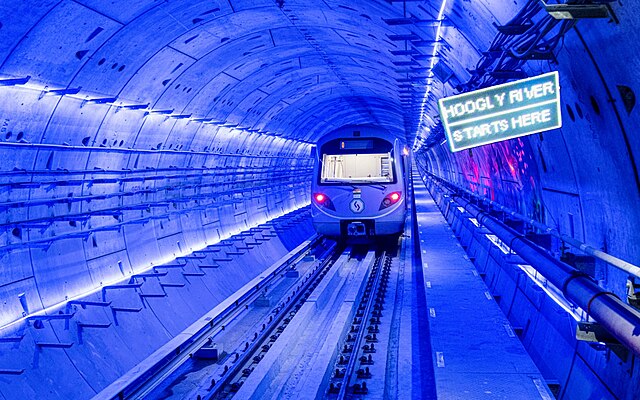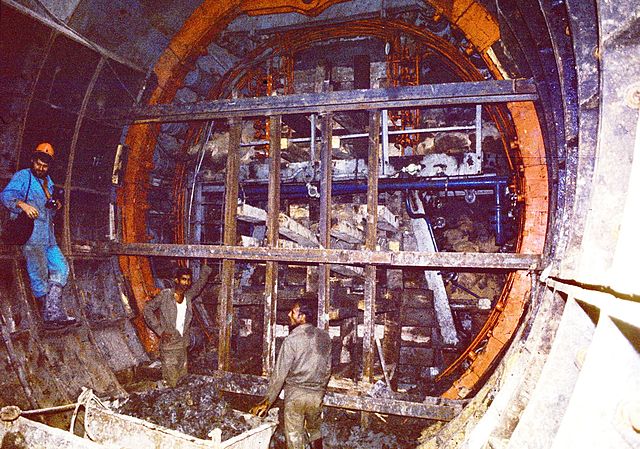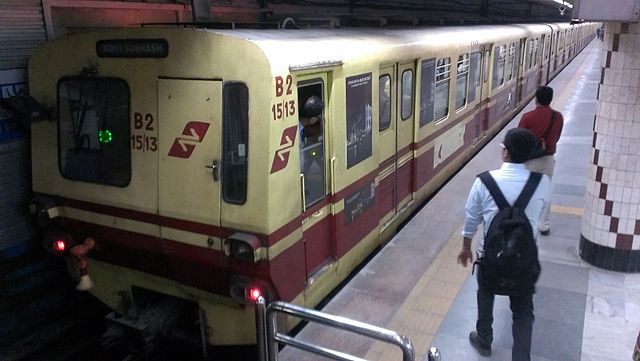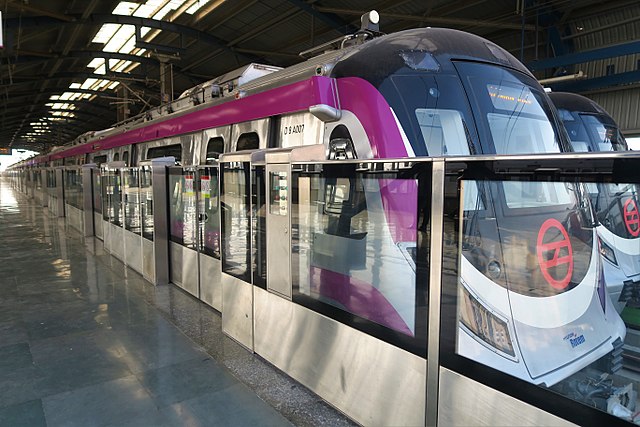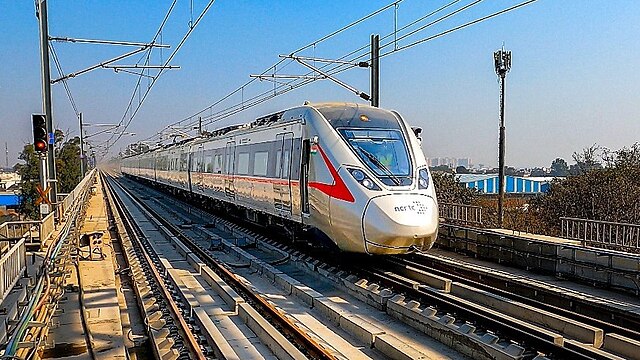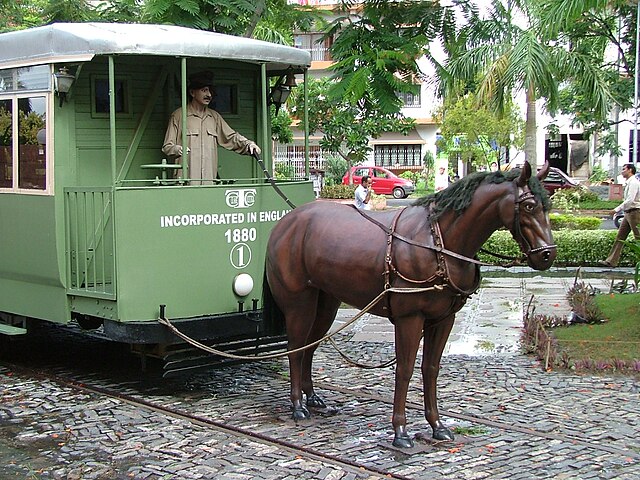The Kolkata Metro is a rapid transit system serving the city of Kolkata and the wider Kolkata Metropolitan Region in West Bengal, India. Opening in 1984, it was the first operational rapid transit system in India, beside being the second busiest and fourth-longest metro network in India. As of March 2024, it has four operational lines: the 32.13 km (19.96 mi) Line 1 from Dakshineswar to Kavi Subhash, 14.1 km (8.8 mi) Line 2 from Salt Lake Sector V to Howrah Maidan, 7.75 km (4.82 mi) Line 3 from Joka to Majerhat and 5.4 km (3.4 mi) Line 6 from Kavi Subhash to Hemanta Mukherjee for a total of 59.38 km (36.90 mi). Two other lines are in various phases of construction and planning. The system has a mix of underground, at-grade and elevated stations using both broad-gauge and standard-gauge tracks. Trains operate between 06:55 and 22:30 IST and the fares range from ₹5 to ₹50.
Kolkata Metro
Shyambazar-Belgachhia Section (Shield tunneling using compressed air and airlocks) using Hungarian expertise during its construction in the 1980s.
Kolkata Metro BHEL 1000 metro rake.
Metro rake mural at Majerhat metro station
Urban rail transit in India
Urban rail transit in India plays an important role in intracity transportation in the major cities which are highly populated. It consists of rapid transit, suburban rail, monorail, and tram systems.
The Magenta Line of the Delhi Metro
India's modern regional rail system in Meerut, the RapidX
Mylapore MRTS station in Chennai. The suburban rail is the largest urban transit mode in India by ridership.
Life-size model of a horse-drawn tram at the City Centre arcade, Salt Lake, Kolkata

